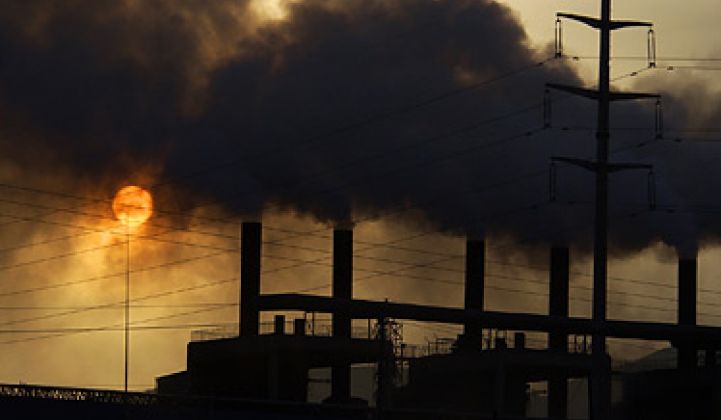Once again, a respected international body has issued a report showing we're on the verge of a climate tipping point -- and that we're nowhere close to addressing the problem.
In its latest analysis, Redrawing the Climate Map, the International Energy Agency warns that we are dangerously close to surpassing a temperature rise of 2 degrees Celsius, and on a path toward a 5-degree Celsius rise in the coming decades. That kind of increase in global temperatures would be "catastrophic," warned the agency.
But don't get paralyzed with fear quite yet. As IEA points out in the report, there are still some pretty simple measures the world can take to stabilize emissions.
Forget a global climate deal, massive deployment of carbon capture and storage technologies, or hacking the planet with geoengineering. Some of the most effective tools are vastly more simple.
As IEA points out, it all starts with efficiency.
According to the agency, half of the reductions in carbon dioxide emissions needed to stabilize global temperature rise at 2 degrees Celsius come from energy efficiency measures like building performance standards, equipment and appliance standards, and mileage standards for automobiles.
"Targeted energy efficiency measures would reduce global energy-related emissions by 1.5 gigatons in 2020͕ a level close to that of Russia today," wrote IEA in its report.
There are three extraordinarily simple policies that stand out in the report.
Make industrial motors in India and China more efficient
Nearly 40 percent of industrial sector emissions reductions in India could be met simply by adopting better standards for industrial motors. The country currently has no minimum standards for motors, greatly increasing the energy intensity of the industrial sector. The adoption of international best practice standards -- a move that could be implemented fairly quickly -- could result in 55 megatons of CO2 emissions reductions in the country by 2020.
The same is true in China, where motors account for up to 70 percent of electricity consumption in the industrial sector. China's current standards are between 10 percent and 30 percent lower than international best practices standards. Through better implementation of variable speed drives, appropriate motor sizing and better maintenance standards, China could substantially reduce industrial emissions -- a sector that accounts for two-thirds of the country's electricity consumption.
Adopt better standards for China's heating and cooling systems
Crafting new standards for heating and cooling equipment for China's buildings could also substantially reduce emissions. According to IEA, China alone would represent 40 percent of CO2 reductions that come through better performance standards in heating and cooling. But these improvements aren't just limited to China. With tighter standards in place, America and Europe could account for one third of emissions reductions in the heating and cooling sector by 2020 -- potentially spurring a decline of 80 megatons of CO2 in the U.S. and 65 megatons in Europe.
Tighten appliance and lighting standards around the world
The U.S. and Europe are already known for having strong appliance standards compared to the rest of the world. But IEA figures show even more room for improvement. America could reduce emissions by 44 percent in the sector by 2020 if current standards are tightened. In India, such standards could help reduce emissions by 40 percent in the sector. Absolute emissions reductions are highest in China, which could prevent 125 megatons of CO2 emissions from entering the atmosphere through improvements to standards for lighting and appliances.
According to IEA, these three efforts are attractive because "they can be quickly implemented and the mechanics of implementation have already been developed in numerous countries."
If intelligence were layered on top of these policy changes, the impact would be even greater. According to a recent report from the Carbon War Room, machine-to-machine technologies have the potential to reduce global CO2 emissions by another 1.5 gigatons by 2020 -- offering the same potential as the renewable energy and green building sectors combined.
These examples are by no means a panacea for addressing climate change. But they show how extraordinarily simple efficiency policies can have a massive impact.



